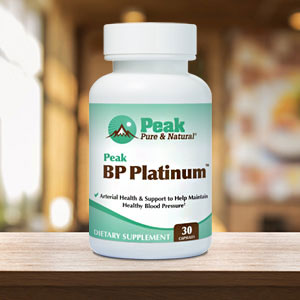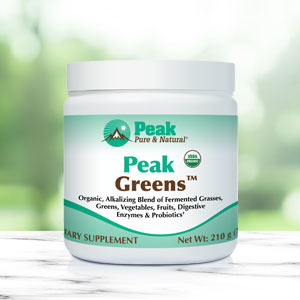Get Easy Health Digest™ in your inbox and don’t miss a thing when you subscribe today. Plus, get the free bonus report, Mother Nature’s Tips, Tricks and Remedies for Cholesterol, Blood Pressure & Blood Sugar as my way of saying welcome to the community!
1 change in 17 risk factors reduces risk of stroke, dementia and depression

Sometimes, dealing with age-related diseases can feel like playing that old arcade game, Whac-a-Mole. You smash one down, then another pops up, and so on.
That’s why one of our favorite sayings is “prevention is the best medicine.” However, working at preventing them all could seem daunting — unless there’s a connection.
That’s what’s so empowering about research revealing common risk factors that link stroke, dementia and late-life depression — and how modifying any one of them can reduce your risk of all three of these conditions…
Many risk factors in common
Researchers have begun focusing on the root causes of disease and drawing commonalities between them. That’s especially helpful when the common factors are modifiable — meaning you can change them and impact your health.
Researchers at Mass General Brigham analyzed previous meta-analyses on three age-related brain diseases — stroke, dementia and late-life depression — and combined the data to identify modifiable risk factors shared by at least two out of the three diseases. They also estimated each risk factor’s relative impact on quality of life and early death.
In total, the researchers identified 17 risk factors shared by at least two of the three diseases:
- Blood pressure
- Kidney disease
- Fasting plasma glucose
- Total cholesterol
- Alcohol use
- Diet
- Hearing loss
- Pain
- Physical activity
- Purpose in life
- Sleep
- Smoking
- Social engagement
- Stress
- Body mass index
- Leisure time cognitive activity
- Depressive symptoms
Of the 17 risk factors, two had the most significant impact on the incidence and burden of all three diseases: high blood pressure and severe kidney disease.
Physical activity and engagement in leisure activities with a cognitive aspect, such as puzzles, were linked with a lower risk of disease. It’s possible, however, the researchers suspect, that individuals with brain disease may just be less capable of engaging in these types of activities. Then again, some pretty solid research already links exercise to reduced risk of stroke and Alzheimer’s.
But the most exciting finding of all?
The researchers discovered that modifying any one of the 17 shared risk factors can reduce the risk of all three conditions. That’s great news for those of us overwhelmed by that long list.
“Our study identified 17 modifiable risk factors shared between stroke, dementia, and/or late-life depression, emphasizing that there are many different steps individuals can take to lower their risks for these age-related brain diseases,” says senior author Dr. Sanjula Singh of Massachusetts General Hospital (MGH), a founding member of the Mass General Brigham healthcare system.
“Dementia, stroke, and late-life depression are connected and intertwined, so if you develop one of them, there’s a substantial chance you may develop another one in the future,” says first author Dr. Jasper Senff of MGH.
“And because they share these overlapping risk factors, preventive efforts could lead to a reduction in the incidence of more than one of these diseases, which provides an opportunity to simultaneously reduce the burden of age-related brain diseases.”
Tackling those risk factors
The researchers note that these findings can inform tools such as the McCance Center Brain Care Score, used by many healthcare professionals to determine brain health and offer guidance on improving it. Mass General Brigham researchers developed and validated the Brain Care Score and have updated it to reflect the latest scientific information.
The researchers emphasize the need for more investigations into modifiable risk factors of late-life depression and call for a randomized controlled trial to test an intervention using the Brain Care Score.
“Healthcare is increasingly complex,” says Dr Jonathan Rosand of MGH. “But these findings remind us that preventing disease can be very simple. Why? Because many of the most common diseases share the same risk factors.”
That long list of risk factors is intimidating. But since addressing even one of them can reduce your odds, I suggest starting with the two factors that all three diseases have in common: blood pressure and kidney function.
Fortunately, you can make a simple change to benefit both of those health markers: eating more fruits and vegetables.
Many components of a modern diet — including meats, processed foods, coffee and alcohol — are acidic. An overly acidic body can throw your pH balance out of whack and promote kidney dysfunction and high blood pressure.
Fruits and vegetables have an alkalizing effect that balances your pH, helping to lower blood pressure and improve kidney function as well as supporting cardiovascular function — and will also tackle another of those 17 risk factors: diet.
Not bad for one small change to your lifestyle.
Editor’s note: Did you know that when you take your body from acid to alkaline you can boost your energy, lose weight, soothe digestion, avoid illness and achieve wellness? Click here to discover The Alkaline Secret to Ultimate Vitality and revive your life today!
Sources:
17 modifiable risk factors shared by stroke, dementia, and late-life depression — ScienceDaily
Modifiable risk factors for stroke, dementia and late-life depression: a systematic review and DALY-weighted risk factors for a composite outcome — Journal of Neurology, Neurosurgery & Psychiatry















